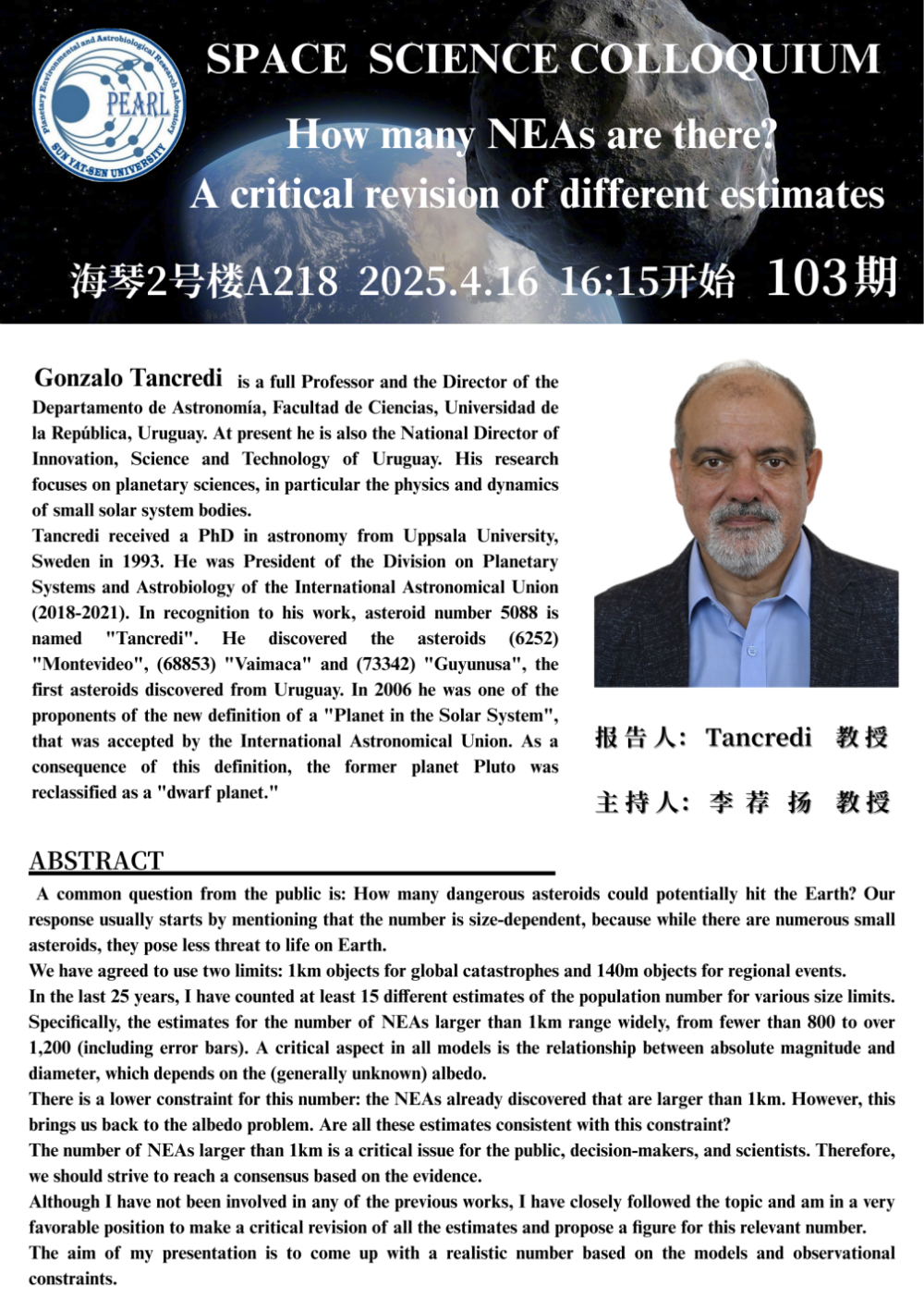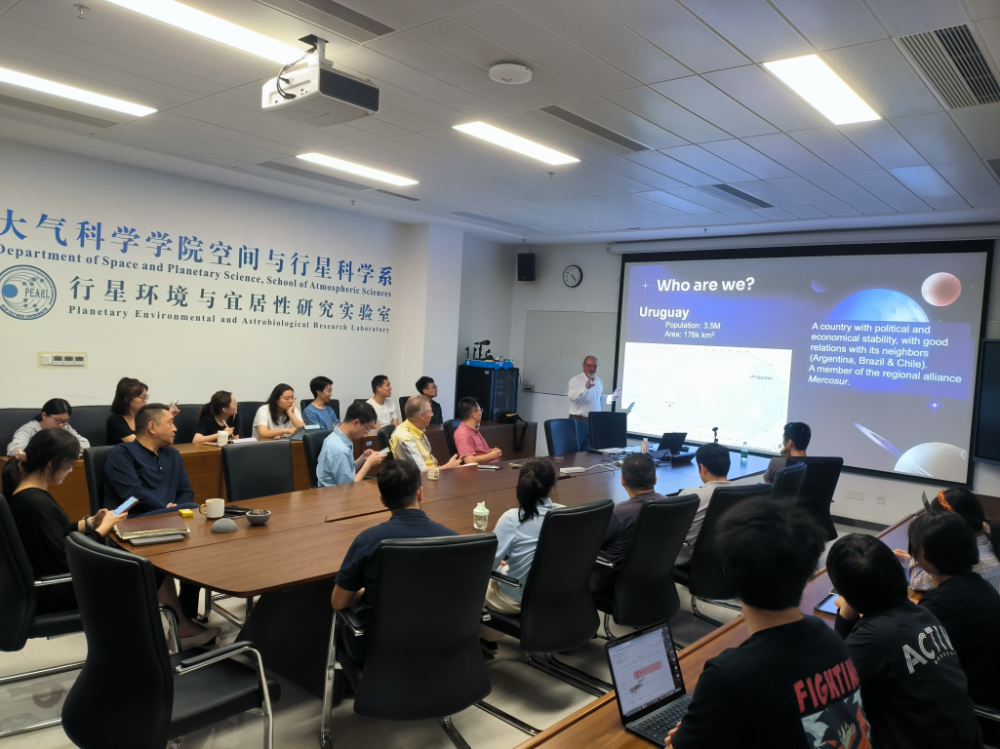How many NEAs are there? A critical revision of different estimates
How many NEAs are there? A critical revision of different estimates
报告人简介:Gonzalo Tancred, is a full Professor and the Director of the Departamento de Astronomía, Facultad de Ciencias, Universidad de la República, Uruguay. At present he is also the National Director of Innovation, Science and Technology of Uruguay. His research focuses on planetary sciences, in particular the physics and dynamics of small solar system bodies. Tancredi received a PhD in astronomy from Uppsala University, Sweden in 1993. He was President of the Division on Planetary Systems and Astrobiology of the International Astronomical Union (2018-2021). In recognition to his work, asteroid number 5088 is named "Tancredi". He discovered the asteroids (6252) "Montevideo", (68853) "Vaimaca" and (73342) "Guyunusa", the first asteroids discovered from Uruguay. In 2006 he was one of the proponents of the new definition of a "Planet in the Solar System", that was accepted by the International Astronomical Union. As a consequence of this definition, the former planet Pluto was reclassified as a "dwarf planet."
报告简介: A common question from the public is: How many dangerous asteroids could potentially hit the Earth? Our response usually starts by mentioning that the number is size-dependent, because while there are numerous small asteroids, they pose less threat to life on Earth.
We have agreed to use two limits: 1km objects for global catastrophes and 140m objects for regional events.
In the last 25 years, I have counted at least 15 different estimates of the population number for various size limits. Specifically, the estimates for the number of NEAs larger than 1km range widely, from fewer than 800 to over 1,200 (including error bars). A critical aspect in all models is the relationship between absolute magnitude and diameter, which depends on the (generally unknown) albedo.
There is a lower constraint for this number: the NEAs already discovered that are larger than 1km. However, this brings us back to the albedo problem. Are all these estimates consistent with this constraint?
The number of NEAs larger than 1km is a critical issue for the public, decision-makers, and scientists. Therefore, we should strive to reach a consensus based on the evidence.
Although I have not been involved in any of the previous works, I have closely followed the topic and am in a very favorable position to make a critical revision of all the estimates and propose a figure for this relevant number.
The aim of my presentation is to come up with a realistic number based on the models and observational constraints.



